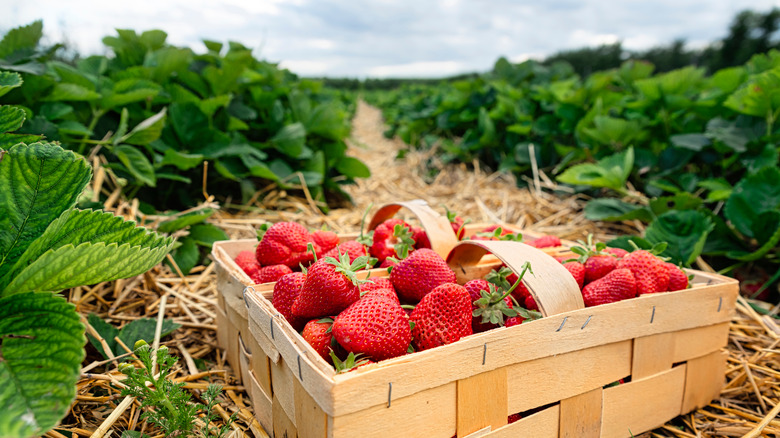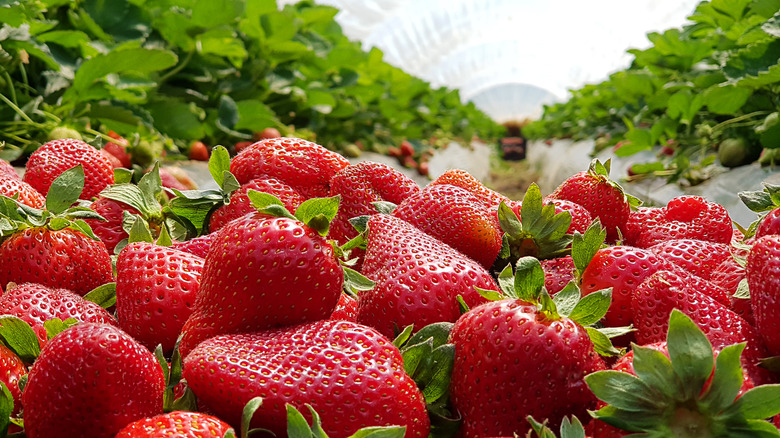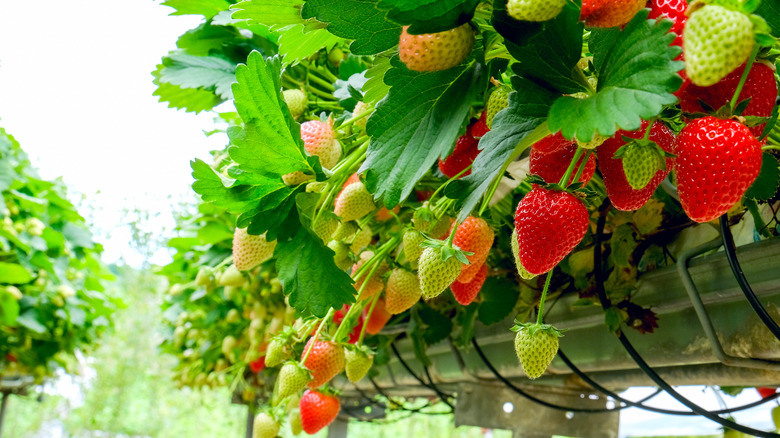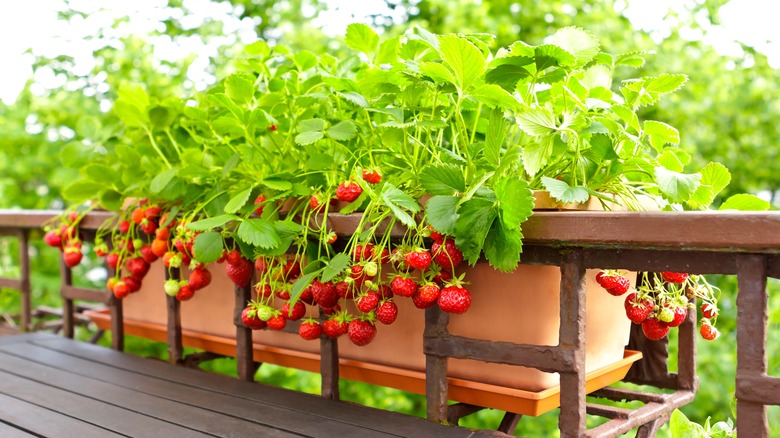The 3 Types Of Strawberries, Explained
Strawberries, like most berries, are a sweet treat that is delicious, healthy, and so versatile. They're delicious on their own, cut or de-stemmed. They also have the unique ability to up-level simple recipes like strawberry lemonade. You can put them in cakes, pies, muffins, and even cookies, and according to Newsweek, strawberry ice cream is the third most popular flavor among consumers and is the top fruit-based frozen treat on the market.
While you might think that every strawberry you see in the grocery store or at the farmers market is the same, that isn't the case. It turns out there are tons of different types of strawberries out there. There are three main categories of strawberries, each with many varieties. These plants are categorized by their unique growing and harvesting schedule, so deciding which type of strawberry to plant depends on the grower's needs. Here, we'll take a look at these three types and what distinguishes them from one another.
June-bearing strawberries
For someone hoping to have one big annual strawberry harvest, the June-bearing strawberry plant is the perfect option. According to StrawberryPlants.org, June-bearing strawberries are the most common type for commercial production. Their plants produce fruit during a two-to-three-week period during the spring or summer (hence the name.) The different varieties have different by harvest times and can be classified as early season, midseason, or late season. For a prolonged harvest, some growers coordinate the different varieties in their garden.
June-bearing strawberry plants produce larger fruit, and many varieties in this category tend to be a bit sweeter, per Garden Guides. A large crop that comes all at once is perfect for those who need a huge bulk of strawberries. This could mean jam producers, canning companies, frozen strawberry brands, etc. Once the plants produce all their fruit for the season, they go dormant in preparation for the next crop the following year. When the fruit ripens, June-bearing plants divert their energy into growing and produce more runners (stem systems) that root into the ground and spread, per Garden Guides.
Everbearing strawberries
The term everbearing is a bit of a misnomer as everbearing strawberry plants only produce fruit two to three times per year during the warmer months, per Garden Guides. Crop harvests for these strawberry plants usually occur in the spring and then again in the fall.
These plants are smaller than the June-bearing types as they expend energy into growing fruit far longer and can't offer as much energy towards producing runners and spreading. Gardening Know How explains that everbearing strawberry plants also produce a smaller-sized strawberry.
Crops come at different frequencies depending on the climate, notes Ewell Acres. In places with changing seasons (very cold winters, very hot summers), expect two crops yearly. In places with more moderate climates, it can be three or as many as four crops per year. Ewell Acres also notes that everbearing strawberry plants are not ideal if you're hoping to preserve strawberries in large quantities like jams, canning, freezing, etc.
Day-neutral strawberries
Day-neutral strawberry plants are a type of everbearing strawberry plant, but they have their own unique spin on the everbearing crop production timeline. That spin? They aren't seasonally sensitive. These strawberry plants continuously produce fruit throughout July, August, and September notes the San Francisco Gate. They also explain that the name day-neutral is derived from the fact that these plants behave the same even as the days grow shorter in the fall. They will flower and fruit throughout the summer as long as temperatures stay between 35 and 85 degrees Fahrenheit. The size of their fruit is similar in size to everbearing strawberries, which means they are also smaller than June-bearing varieties. Their plants are also similar in size to general everbearing plants, so they are perfect for a home garden, notes Mother Earth News.
Every type of plant has its own benefits and fans; so no matter what type of strawberry plant you're getting your strawberries from, you can be sure they will be a tasty treat when ripe.



